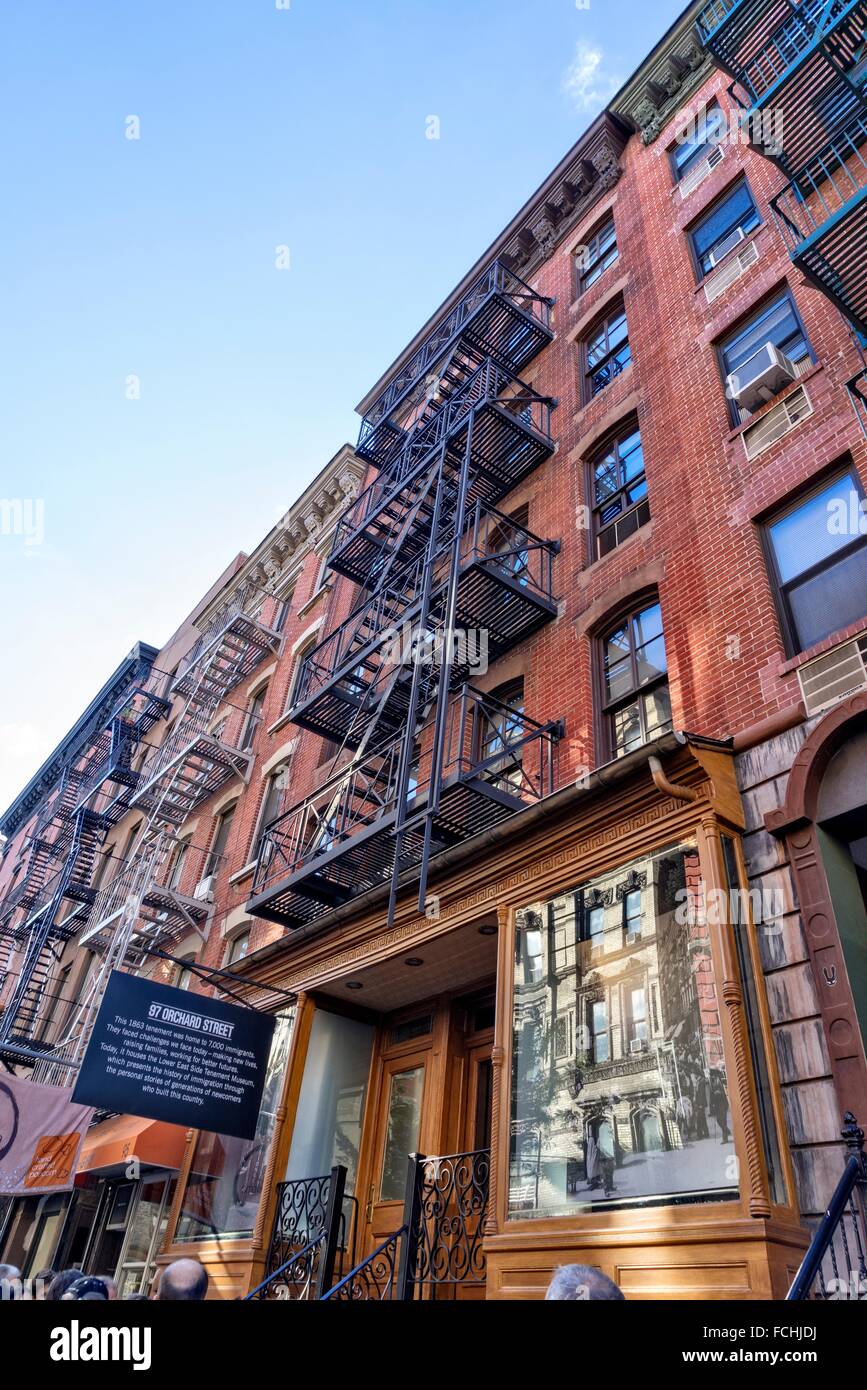Imagine stepping back in time, not to a grand palace or stately manor, but to the cramped, vibrant apartment of an immigrant family in late 19th century New York City. This is the experience offered by the Tenement Museum, a unique and powerful historical institution that uses the stories of its former residents to illuminate the lives of working-class immigrants who helped shape the city and its culture.

Image: www.alamy.com
The Tenement Museum, located in a preserved Lower East Side building, isn’t just a museum; it’s a portal into the past. It allows visitors to connect with the joys, struggles, and aspirations of those who lived within its walls. It’s a reminder that even in the midst of hardship, the human spirit can thrive, endure, and contribute to the grand tapestry of American history.
The Power of Storytelling: Uncovering Lives Within the Walls
The Tenement Museum doesn’t just present artifacts and historical facts – it tells stories. Each visitor experiences the museum through the lives of its former residents, whose stories are brought to life through meticulously researched narratives, original artifacts, and even recreated apartments.
One of the most poignant exhibits showcases the story of the Gumpertz family, who arrived from Germany in 1871 and lived in the tenement for nearly 20 years. Their meticulously preserved apartment, filled with their personal belongings, offers a glimpse into their daily routines, cultural practices, and hopes for a better future. By stepping into their world, visitors gain a deeper understanding of the challenges and triumphs of immigrant life in New York City.
More Than Just Bricks and Mortar: A Tapestry of Lives
The museum’s approach goes beyond simply showcasing the physical structure of the tenement. It delves into the myriad experiences of those who lived there, highlighting the social, economic, and cultural forces that shaped their lives. Visitors learn about the complexities of immigrant communities, the realities of poverty and overcrowding, and the constant struggle for survival.
Through meticulously researched exhibits, visitors can explore topics ranging from the impact of industrialization on immigrant communities to the social and political movements that emerged from the tenement neighborhoods. The museum also dives into the stories of women and children, often overlooked in traditional historical narratives, bringing their voices and experiences to the forefront.
Walking Through Time: Re-creating the Everyday
The Tenement Museum isn’t just an exploration of the past; it’s an immersive experience. Visitors can step into recreated apartments, complete with authentic furniture, clothing, and personal mementos. These reconstructions, meticulously designed based on historical research and the memories of former residents, offer a tangible way to connect with the lives lived within the tenement’s walls.
Walking through these recreated spaces, one can almost hear the echo of footsteps, the murmur of conversations, and the laughter of children. The objects – a worn-out armchair, a collection of family photos, a child’s toy – become tangible reminders of the lives lived within these rooms.

Image: familytravellifestyle.com
Beyond the Walls: Exploring the Legacy of Tenement Life
The Tenement Museum goes beyond the physical boundaries of the building, connecting its history to the larger context of New York City and American history. It showcases the enduring impact of immigrant communities, their contributions to the city’s cultural landscape, and the challenges they faced.
The museum’s exhibits explore the evolution of immigrant communities, the ongoing struggles for social justice, and the fight for equal rights. It highlights the importance of preserving immigrant voices and celebrating the diversity that enriches American society.
A Call to Action: Connecting History to Today
A visit to the Tenement Museum isn’t just a trip into the past; it’s an opportunity to engage with the present. It encourages visitors to ask critical questions about their own place in history, the social and economic forces that shape their lives, and the challenges faced by marginalized communities.
The museum inspires reflection on the immigrant experience, the importance of social justice, and the value of preserving stories that often go unheard. It reminds us that history is not just about dates and events but about the lives of individuals who shaped the world we know.
Tenement Museum New York City
Embracing the Power of Storytelling
The Tenement Museum stands as a testament to the power of storytelling. It uses the voices of ordinary people to illuminate the often-overlooked aspects of history, making the past feel vividly alive. By connecting with the lives of its former residents, visitors gain a deeper understanding of the complexities of urban life, the struggle for survival, and the enduring spirit of human resilience.
A visit to the Tenement Museum is more than just a historical tour; it’s an emotional journey. It’s a reminder that within the walls of history, we find the stories that shape our present and guide our future. It’s a call to action, encouraging visitors to embrace the power of storytelling, to champion social justice, and to work towards a society that honors the contributions of all its members. So, the next time you find yourself in New York City, take a step back in time and discover the stories that lie within the walls of the Tenement Museum. You might just find yourself walking through history and reflecting on the lessons of the past, for both the individuals who lived there and for the world we are building today.



/GettyImages-173599369-58ad68f83df78c345b829dfc.jpg?w=740&resize=740,414&ssl=1)


